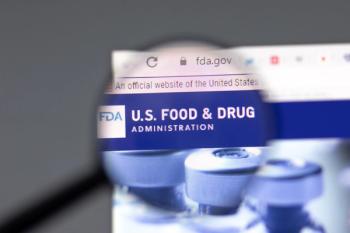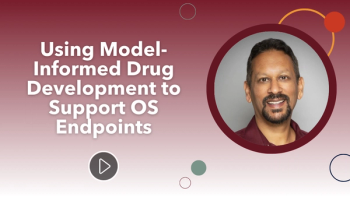
- Applied Clinical Trials-05-01-2010
- Volume 0
- Issue 0
Health Reform Supports Biomedical R&D
Pharma will pay new fees and rebates but gain drug utilization and safeguards to innovation.
The massive health reform legislation approved by Congress in March promises to significantly expand the number of Americans with health care coverage and pharmacy benefits, enlarging the market for prescription drugs. Manufacturers will pay fees and discounts adding up to $105 billion over 10 years, Avalere Health estimates. But pharma companies consider that a reasonable tradeoff for policies that support biomedical research and innovation, namely a pathway for developing and marketing follow-on versions of biotech therapies. The final bill, moreover, has no public plan with a national formulary, and says nothing about HHS negotiating drug prices for Medicare or drug reimporting.
Jill Wechsler
Broader benefits
The reform package's main selling point is that it provides health benefits to some 32 million uninsured. Individuals and small companies will be able to purchase coverage through new state-based insurance exchanges, and state Medicaid programs will be available to 11 million more lower-income adults and children. Prescription drug coverage is included on the list of essential benefits required for plans offered through the exchanges, making reimbursement for specialty medicines more likely. In addition, insurance market reform, which prevents denial of coverage based on pre-existing conditions and curbs copays and annual and lifetime limits, promises to expand pharmacy benefits to patients needing medicines to treat serious or chronic health conditions.
Seniors will gain better access to medicines through multiple changes in Medicare. The legislation authorizes annual wellness visits that produce personal immunization and medication recommendations. There's more outreach to low-income beneficiaries to encourage appropriate drug use, plus improved complaint and appeals systems that can help seniors obtain needed therapies. The bill codifies mandatory coverage of medicines in six protected drug classes by Part D drug plan formularies, while leaving the door open to further policy modification.
The most high-profile change is to close up the long-lamented donut hole in the Medicare drug program, which now imposes hefty out-of-pocket costs on seniors with high drug bills. Currently, Medicare beneficiaries who spend over $2830 on medicines hit a coverage gap where they have to pay the full cost of prescriptions; after drug outlays exceed $6440, the government covers 95% of additional "catastrophic" costs.
To provide some immediate relief, Medicare is giving a $250 rebate to beneficiaries who fall in the donut hole this year (2010). Beginning next January (2011), manufacturers will cover 50% of the negotiated rate for brand medicines filled by seniors in the gap. In 2013, Medicare will move to close the donut hole further by covering a portion of the remaining cost to beneficiaries, starting low but ramping up to pay 25% of donut hole outlays by 2020. For generic drugs, Medicare will increase coverage of gap products in 2011 until plans pay 75% of the cost and beneficiaries 25% in 2020. At that point, policy makers consider the donut hole essentially closed because the remaining 25% patient share will be in line with copays on drugs prior to hitting the coverage gap.
While the donut hole discounts will cost manufacturers some $32 billion over 10 years, the change eliminates a major source of confusion and hardship for elderly patients and is expected to boost medication compliance. That will reduce the growing number of seniors who either stop taking drugs or switch to generics when they hit the gap, and also help seniors move through the donut hole more quickly to catastrophic coverage.
To further finance gap coverage, drug companies will pay $28 billion in new fees over 10 years, starting with $2.5 billion in 2011. Collections will rise to $4 billion in 2017 and then drop to $2.8 billion in 2019 and subsequent years. The fees will be apportioned by the Treasury Department based on a company's relative share of branded prescription drug sales the previous year to Medicare, Medicaid, the Veterans Administration, and Department of Defense health care programs. Manufacturers with government sales less than $5 million get a pass, while companies with sales over $400 million a year will pay a full share.
Pharma companies also will ante up another $38 billion in higher Medicaid rebates, according to Congressional Budget Office (CBO) estimates. The rebate jumps from 15% to 23.1% of average manufacturer price (AMP) for brand drugs, and from 11% to 13% for generic drugs, retroactive to the beginning of this year (2010). The rebate is extended to new formulations of oral solid dosage forms, and can be collected by Medicaid managed care organizations, a change that may encourage health plans and community health centers to press for additional company discounts.
Encouraging innovation
Manufacturers are not complaining too loudly about the added fees and rebates because the legislation establishes a pathway for the Food and Drug Administration to authorize follow-on biologics (FOBs), a policy that many consider the "crown jewel" in the bill for drug and biotech companies.
After years of debate on this issue, innovator firms gained an unprecedented 12-year data exclusivity period for all reference biotech products, with the possibility of a six-month extension for sponsors who conduct pediatric studies. CBO analysts say the program will save the government—and cost industry—$7 billion over 10 years.
Jim Greenwood, President of the Biotechnology Industry Organization (BIO), praised the measure for providing "incentives necessary to attract the massive investment required to speed the discovery and development of the next generation of breakthrough therapies." But generic drug companies complained it's a big giveaway to Big Pharma.
All manufacturers, however, stand to benefit from clearer policies on developing and regulating "biosimilars" and "biobetters." That task now falls to FDA, which will issue guidance on what analytical assays and studies will be needed to document FOB safety, purity, and potency, and what criteria could support product interchangeability, a critical issue for marketing and reimbursement. Sponsors will pay FDA user fees; there's a process for innovators to challenge patent infringements; and Medicare Part B will pay for biosimilars at ASP (average sales price) plus 6%—an amount considered high enough to encourage physician prescribing of less costly FOBs.
BIO also championed a relatively minor provision in the legislation that provides tax credits to small biotech companies (less than 250 employees) to cover a portion of R&D expenditures. The bill establishes a two-year program that offers up to $1 billion in total tax credits to cover expenses related to research on certain critical therapies.
Another plus for pharma companies is language clarifying the scope and purpose of comparative effectiveness research (CER) sponsored by a new nongovernment Patient-Centered Outcomes Research Institute. The legislation puts limits on the use of CER to determine coverage or reimbursement decisions by Medicare and other government health programs.
And quality-adjusted life years (QALY) cannot provide a threshold for establishing cost-effectiveness, a policy that distinguishes this program from the UK's National Institute for Health and Clinical Excellence (NICE). Comparative research has to recognize differences in patient populations, and all results have to be made public. Funding for the new entity starts small but increases to $150 million in 2012 and subsequent years by tapping into the Medicare trust fund and by collecting fees from insurance companies.
The Institute will form a governing board this September that includes representatives from pharma and other medical product makers.
Transparency & oversight
At the same time, there are a number of challenges for pharma companies in the legislation. New "Sunshine" provisions require national disclosure of payments and reimbursement by pharma marketers to physicians, beginning in 2013. Looming on the horizon is a new Independent Medicare Advisory Board, formed to propose ways to slow the growth in Medicare spending. Industry is concerned that the panel could institute sweeping changes affecting Part D reimbursement without legislative review. The Board won't be up and running until 2014, which provides time for industry to press for modifications.
Policymakers may not kill the Board, though, as they are anxious to gain any and all savings for the health care system. The new law does very little to "bend the cost curve" on health care spending. Instead it pays for expanded coverage and other reforms through cuts in Medicare provider fees, which Congress often rescinds, and by imposing additional taxes on high-income consumers and health care companies.
A logistical problem for manufacturers is that the higher rebates and discounts go into effect right away, while most of the features that expand coverage will not kick in until 2014. It will take some time before anyone can determine if reform boosts drug revenues enough to offset industry's added costs.
Jill Wechsler is the Washington editor of Applied Clinical Trials, (301) 656-4634
Articles in this issue
over 15 years ago
Applied Clinical Trials Digital Edition - May 2010over 15 years ago
Keeping Ahead of the Technology Curveover 15 years ago
Research Integrity Gets Boostover 15 years ago
EDC & EHR Integrationover 15 years ago
Me-Too's Struggleover 15 years ago
Clinical Trials for Kidsover 15 years ago
act supplement coverover 15 years ago
A Patient Universeover 15 years ago
Conversations With Study Volunteersover 15 years ago
Business and News Update May 2010Newsletter
Stay current in clinical research with Applied Clinical Trials, providing expert insights, regulatory updates, and practical strategies for successful clinical trial design and execution.






.png)



.png)



.png)
.png)
